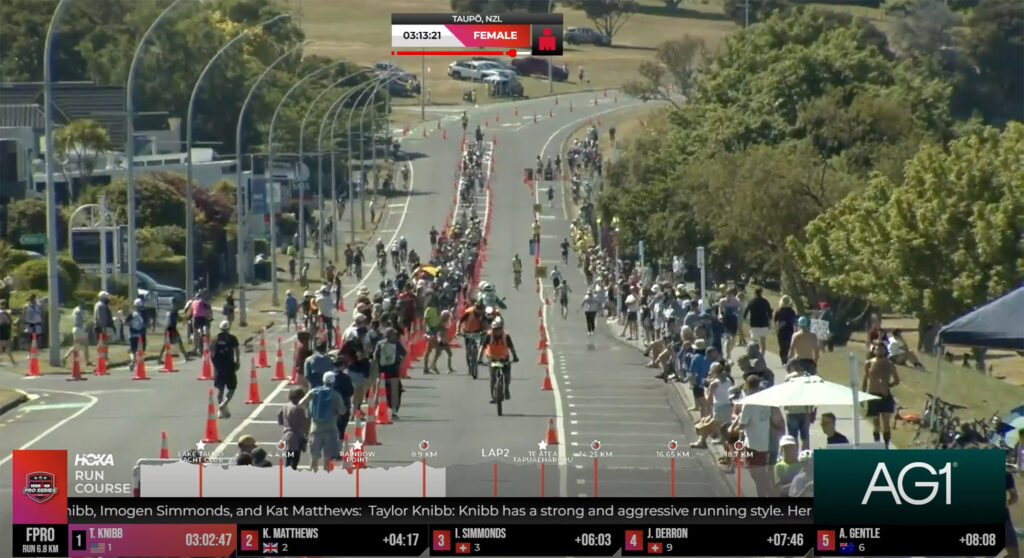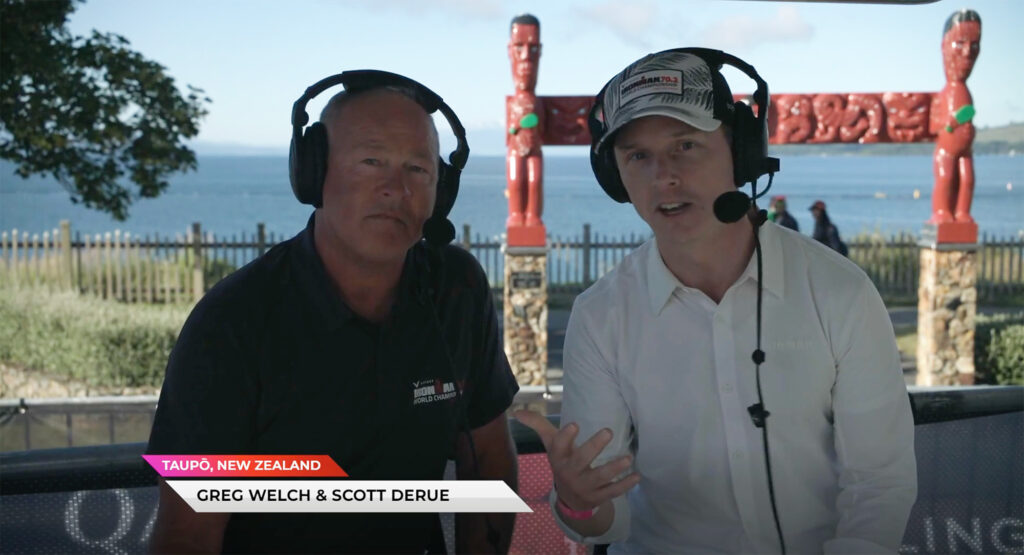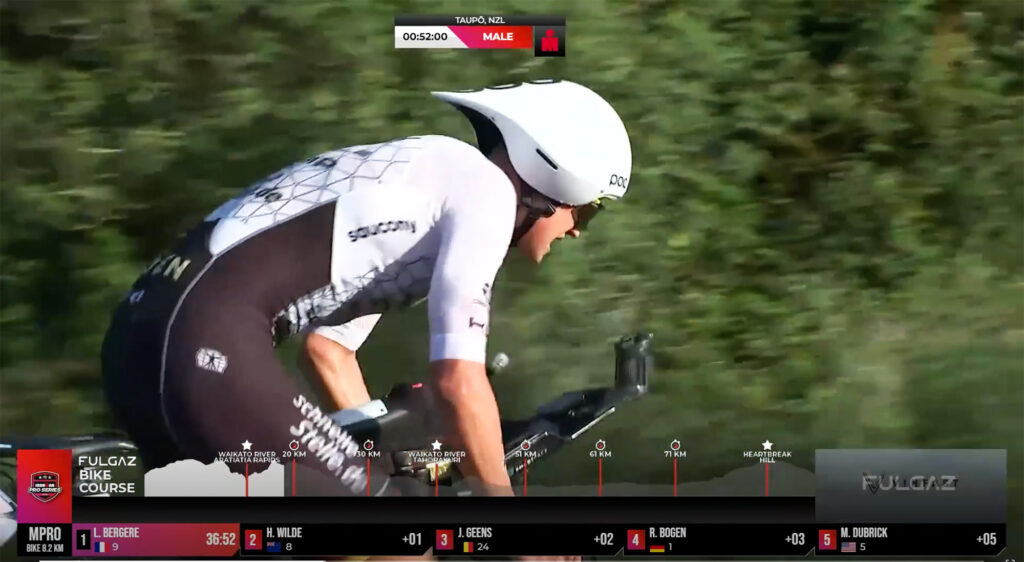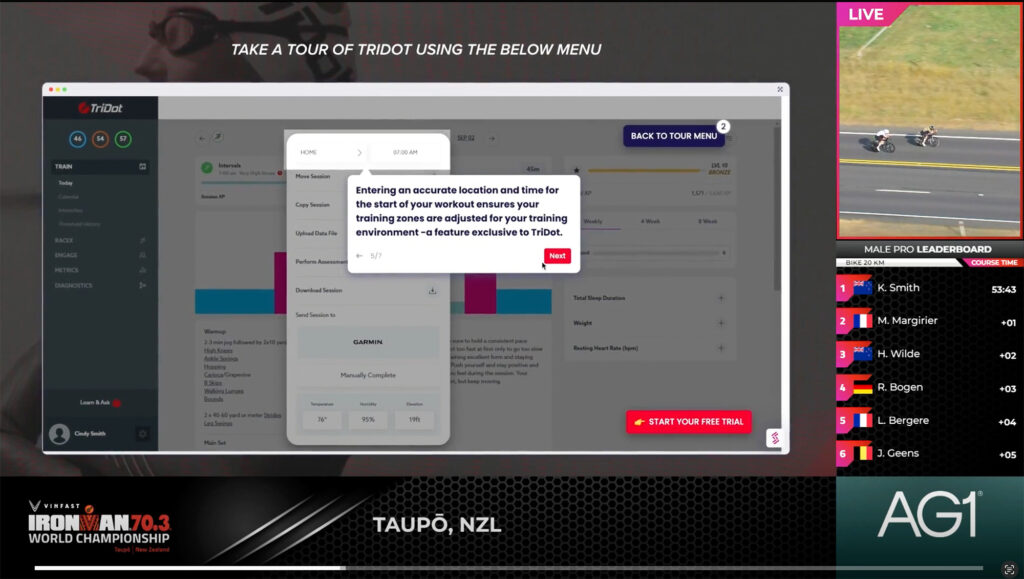Originally published at: Grading IRONMAN’s 70.3 Worlds Broadcast - Slowtwitch News
The 2024 IRONMAN season has finally come to a close. And with it, so does the broadcasting of IRONMAN Pro Series events. The 20 events produced over 150 hours of live content, and streamed on a variety of platforms. For U.S. and Canada, that was on Outside Watch; for the rest of the world, it was on DAZN or YouTube.
For this article, we’re looking solely at the viewing experience from this weekend’s IRONMAN 70.3 Worlds coverage broadcast on the Outside Watch platform. Although I could have easily VPN’d myself into a YouTube coverage experience, I wanted to be able to review it as IRONMAN intended the experience for American and Canadian audiences.
Race Action Coverage: B

For the most part, across both days, the critical moves on course were captured. On Saturday alone we got to see, for instance, Taylor Knibb rocket her way past Sara Perez Sala and never give that lead up again. We were with Kat Matthews as she made her critical bridge up to Imogen Simmonds and Paula Findlay. And we saw the gap get agonizingly tight between Knibb and Matthews on the second lap of the run.
On the men’s side, we had a healthy back and forth between the leading group of 8 men and the 9 man deep chase group. We also got to see the pack dynamics within those two groups, as the likes of Lèo Bergère, Hayden Wilde, and Rico Bogen traded places back and forth throughout the lead pack, whereas Kristian Høgenhaug repeatedly tried to break the chase apart. And, of course, we watched Wilde’s lead evaporate in the span of two kilometers as Jelle Geens wrested the title from his hands.
We also saw a fair amount of “the race within the race” battles for positions within the IRONMAN Pro Series. It helped, of course, that Matthews was right at the front of the women’s field, but we also saw Matthew Marquardt’s struggles on the bike and run as he came up short in his bid to take the Series crown. On the flip side, Gregory Barnaby’s run and finish were missed completely. It also was somewhat surprising to not have him included in the immediate post-race interviews, having won the Series.
Camera Work: C-
I am admittedly sensitive to camera jostling and shaky images, thanks to my concussion history and mild visual processing issues. So when, during the broadcast Sunday, the camera feed swapped to chasing Høgenhaug as he looked to establish himself with the chase group on a downhill, I started feeling sick to my stomach. Høgenhaug was, at best, half in frame, and with the image bouncing everywhere.
It, unfortunately, was not much better on the run segment for the men. Even the critical pass for the race featured a fair amount of bounce.
The women’s race was not as bad. Whether that was due to the bike pace being slower, or if there were different camera operators in place each day, it made it slightly better. But clearly there was an issue of either equipment or operator given the conditions that were faced on the day. I was very glad to be done watching at the end.
Studio Broadcasters: B-

Michael Lovato and Dede Griesbauer have a thankless job. Being able to talk for hours on end, with what amounts to the same talking points, and make it at least mildly entertaining is extremely hard. There are precious few traditional broadcasters who are able to pull this off.
Lovato and Griesbauer have good chemistry with one another, and their passion for the sport comes through, which on the whole makes their broadcasting palatable. However, there are two areas with plenty of room for improvement. First is on athlete identification; both misidentified athletes on camera multiple times, but particularly during the men’s race. That would be more forgivable if more information about what was happening off-camera was being relayed to the pair and able to tell that story effectively.
For example: it was not until after the race that we heard of any bike penalties beyond the one to then-leader Mathis Margirier, and we only knew of that because we saw him pull into a penalty tent. More often than not, the duo are being forced to rely on what’s coming in via the tracker versus getting any information from spotters on the ground. That means when you have situations where timing boxes aren’t relaying information — like they failed during the women’s race on the bike — they, and us the audience, are left to wonder what is happening on course.
On Course Broadcasters: B+

Craig Alexander, Mirinda Carfrae, Matt Lieto, and Greg Welch combined to give great detail and analysis throughout their hours on-screen. In particular, Carfrae has proven herself to be an excellent addition to any broadcast she’s on. She is knowledgeable, insightful, entertaining, and versatile; she’s able to go from reporter to interviewer to host relatively seamlessly. Lieto, too, does a good job in his role heading out on course, whether on the back of a motorcycle or at a specific point during the run.

The primary letdown? Technical issues out on the bike course when Lieto was attempting to relay information.
On-Screen Graphics: C

Can we all please just admit that trying to use AI to write race predictions, based on old timing split data, is a terrible idea? It was at its worst as Wilde’s lead was evaporating, as the AI predictor was still trying to say that Wilde would win and run a time that he clearly was no longer capable of.
Perhaps the most useful graphic on screen was the topographic map to show where the lead of the race was. However, the placement of it in the bottom-third, which was cluttered with AI text and other items, versus in some of the empty space at the top, hindered the intended effect.
And, much like with other race formats, it only focused on the head of the race; it never gave splits back through the field, so unless you had your IRONMAN app on the entire time, you’d have never known what was happening for non-podium places until athletes crossed the finish line.
Commercials: B-

I am not counting any of the infomercial / in-broadcast advertising; this is just in reference to the actual ad units that the broadcast would cut to.
It’s very easy to hate on the advertising during an IRONMAN broadcast. You’re pretty much guaranteed to see ads for Qatar Airways, HOKA, Wahoo, Maurten, Breitling, Vinfast, etc. on a countless loop. And the ad breaks themselves often have impeccable timing; for example, starting the women’s coverage, there was an ad break less than three minutes into the broadcast. Coming right off of the back of the ad unit that had to be watched in order to access the broadcast, it can leave a sour taste in your mouth.
That said, I wound up counting up and timing the broadcast breaks on Saturday. There were 20 total commercial breaks during Saturday’s race, which constituted roughly 11% of the total broadcast time. For comparison’s sake, in your average NFL three hour game broadcast, a full 25% of the broadcast is commercials.
In other words: it’s really not as bad as it seems, at least from a time perspective. But better ad break coordination (especially, say, not missing the finish of your Pro Series champion on the live stream) would improve the experience greatly.
Platform Stability: A-
For as poor of a platform Outside Watch was during the original go-round of IRONMAN broadcasts, it has come an awful long way. There was only one moment towards the end of the bike during the men’s race where I suffered a moment of buffering. Otherwise, the platform was about as bulletproof as it possibly could be.
Overall Grade: B-
IRONMAN produced another decent triathlon livestream broadcast. It’s free for us to watch. We saw the major moments of the race, and it didn’t glitch. Although there’s definitely room for improvement, it scratches the itch for most of triathlon’s existing audience.